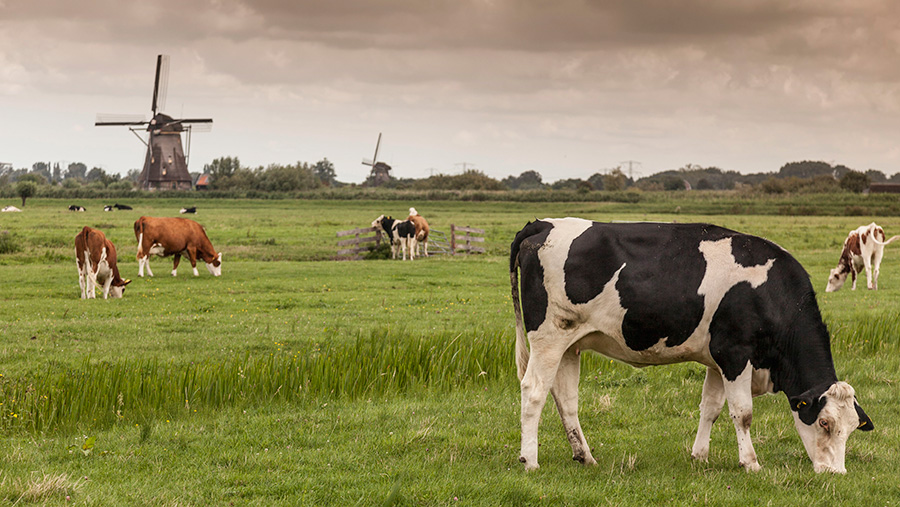Dutch dairy cull plan agreed by EU
 © Cultura/Rex/Shutterstock
© Cultura/Rex/Shutterstock The European Commission has accepted a plan put forward by the Netherlands government to save the Dutch dairy sector.
Europe’s third largest dairy producer has committed to reducing the size of its dairy herd from 1 March by culling animals and incentivising farmers to leave the industry.
Since spring 2015, the Dutch dairy herd has grown by 5% to four million cows and heifers, bringing with it the spiralling production of phosphates.
This has led to the Netherlands exceeding its EU nitrates derogation for the past two years, with the result being the proposed cull of about 160,000 animals – 4% of the national herd.
See also: 13 milk myths and misconceptions debunked
Brussels has agreed to a preliminary Dutch phosphate production reduction strategy that aims to safeguard its current EU derogations of 230-250m kg of nitrate/hectare, worth €1bn (£851.5m) to its economy a year.
Overall, the plan aims to reduce phosphates by 10.8m kg, 38.9% more than required by the EU.
The plan has five pillars:
Dairy reduction = 4m kg saving
Farmers must reduce the number of cows in their herds to the same level as on 2 July 2015, when phosphate reduction plans were first proposed.
This will be spread across stints of two months at a time, starting 1 March.
All Dutch farmers will be required to pay a levy to help fund the plans, with those who fail to comply charged an increased levy and those reducing herd size over the targets receiving a bonus payment.
AHDB Dairy predicts this part of the policy will lead to the culling of 60,000 extra animals, although a percentage of these may be exported.
Farmer reduction = 2.5m kg saving
Producers quitting the industry will be heavily incentivised, receiving €1,200 (£1,024) from the government for each animal removed from the national herd, and a further €1,200(£1,024)/cow from Rabobank for the phosphate rights that will be freed up.
This element of the plan will cost €50m and will see about 100,000 cows slaughtered said AHDB Dairy.
Feed reduction = 1.7m kg saving
Average phosphate content in feed must also come down to 4.3g/kg with a phosphorous protein content of 2.2%, said the levy board.
The industry has until 15 May to comply before additional legislation would be brought in.
Pig and poultry reductions = 2.6m kg saving
Additional reductions will be made in these industries, but they will represent only a fraction of the changes imposed on the dairy industry.
The Netherlands must update the commission with its progress every three months, and will have its derogations removed, receive hefty fines or further herd reductions if it fails to meet them.
